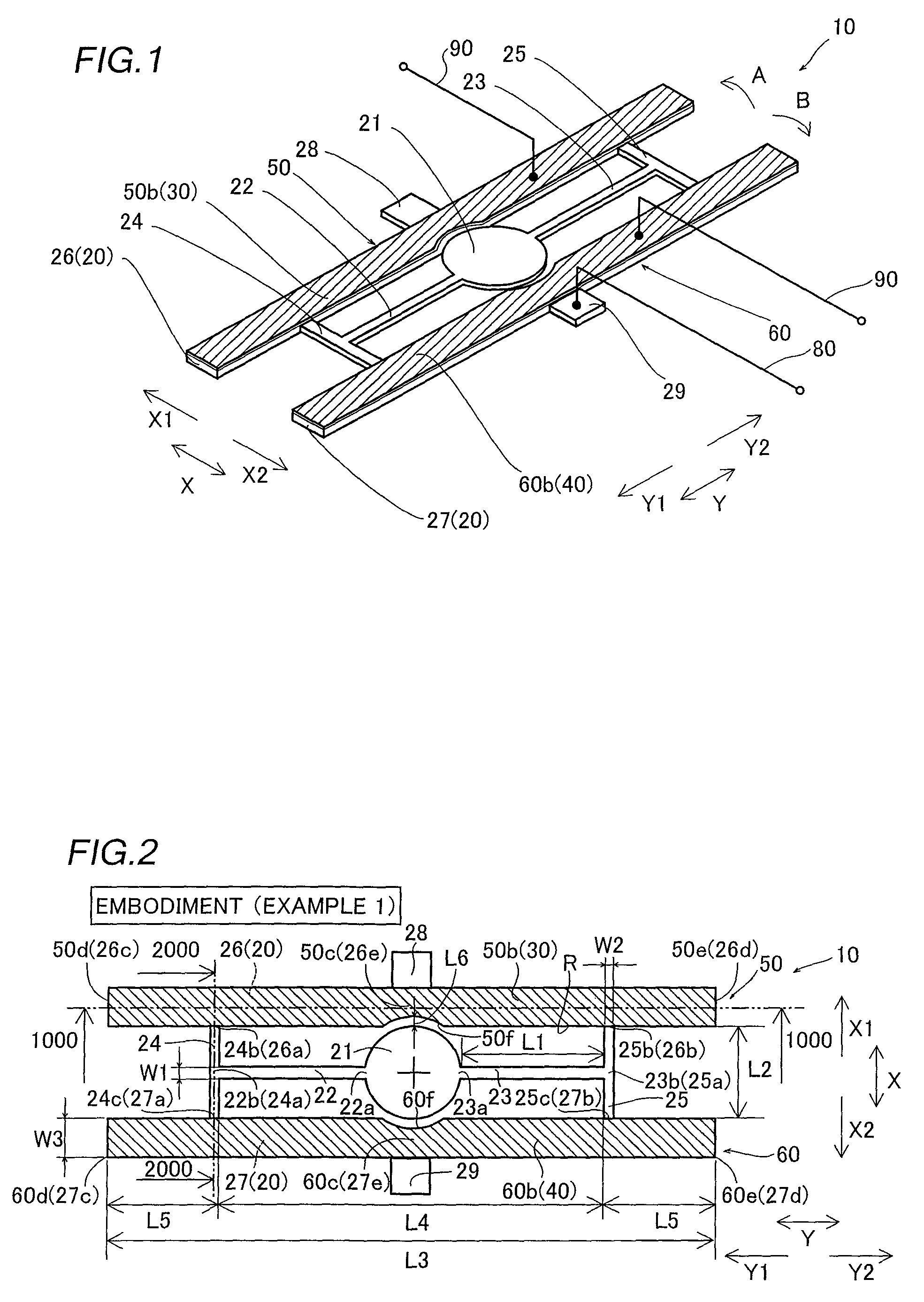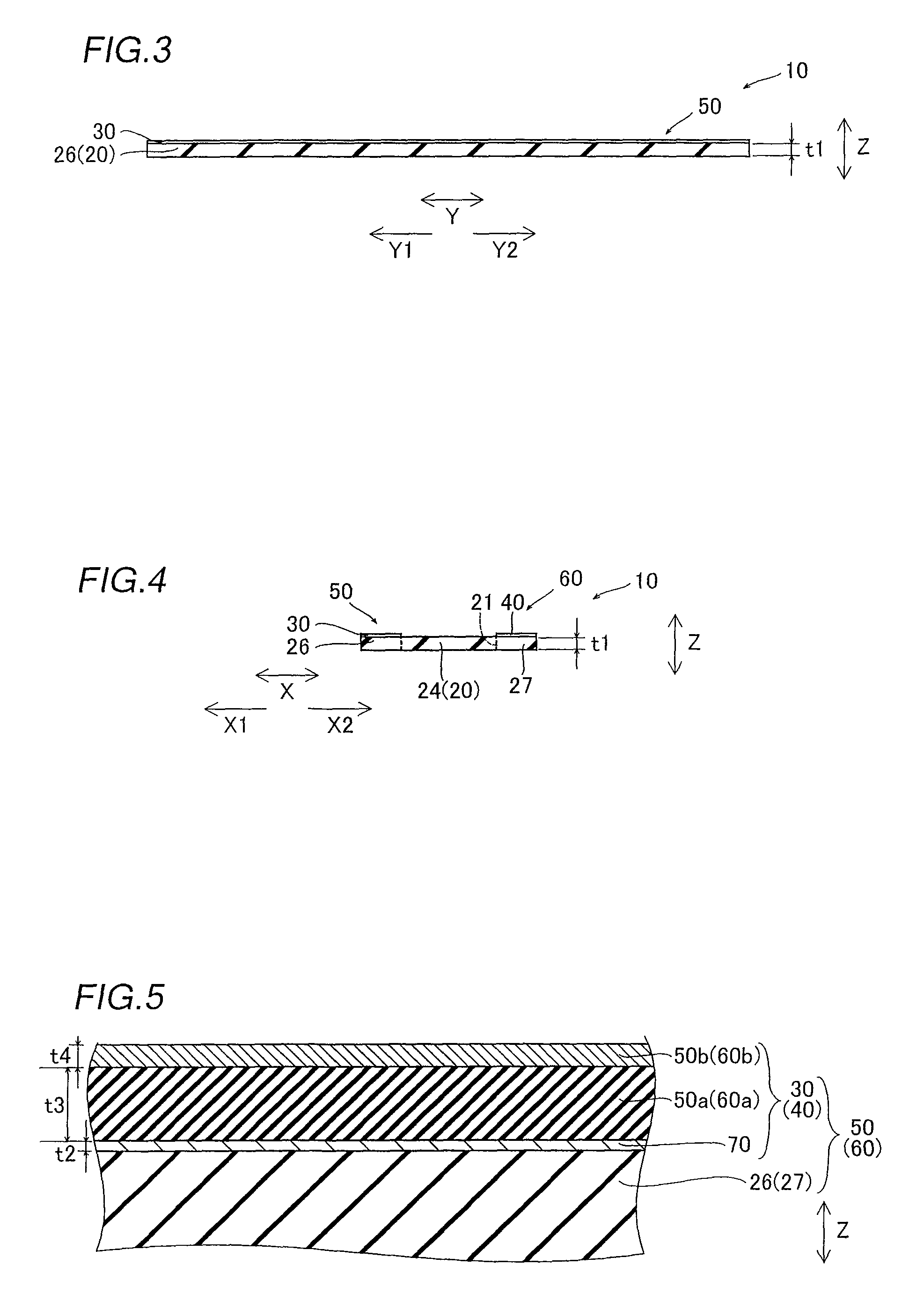Vibrating mirror element
a mirror element and mirror technology, applied in the field of mirror elements, can solve the problems of disadvantageous deformation of the first spring portion, inclination and vibration of the reflecting mirror portion, and may conceivably be so reduced, so as to prevent application, facilitate deformation, and facilitate further expansion of the vibration of the mirror portion
- Summary
- Abstract
- Description
- Claims
- Application Information
AI Technical Summary
Benefits of technology
Problems solved by technology
Method used
Image
Examples
Embodiment Construction
[0054]An embodiment of the present invention is now described with reference to the drawings.
[0055]First, the structure of a vibrating mirror element 10 according to the embodiment of the present invention is described with reference to FIGS. 1 to 5.
[0056]The vibrating mirror element 10 according to the embodiment of the present invention is constituted of a substrate 20 and piezoelectric elements 30 and 40 arranged on the substrate 20, as shown in FIGS. 1 and 2. The substrate 20 includes a mirror portion 21 reflecting light, torsion bars 22 and 23 having identical shapes, bars 24 and 25 having identical shapes, a movable portion 26 formed on the side of a direction X1, and another movable portion 27, having a shape identical to that of the movable portion 26, formed on the side of a direction X2. The torsion bar 22 and the bar 24 are formed on the side of the mirror portion 21 in a direction Y1, while the torsion bar 23 and the bar 25 are formed on the side of the mirror portion 21...
PUM
 Login to View More
Login to View More Abstract
Description
Claims
Application Information
 Login to View More
Login to View More - R&D
- Intellectual Property
- Life Sciences
- Materials
- Tech Scout
- Unparalleled Data Quality
- Higher Quality Content
- 60% Fewer Hallucinations
Browse by: Latest US Patents, China's latest patents, Technical Efficacy Thesaurus, Application Domain, Technology Topic, Popular Technical Reports.
© 2025 PatSnap. All rights reserved.Legal|Privacy policy|Modern Slavery Act Transparency Statement|Sitemap|About US| Contact US: help@patsnap.com



